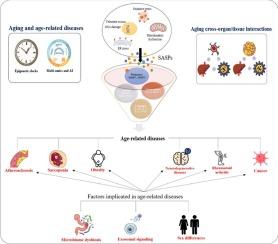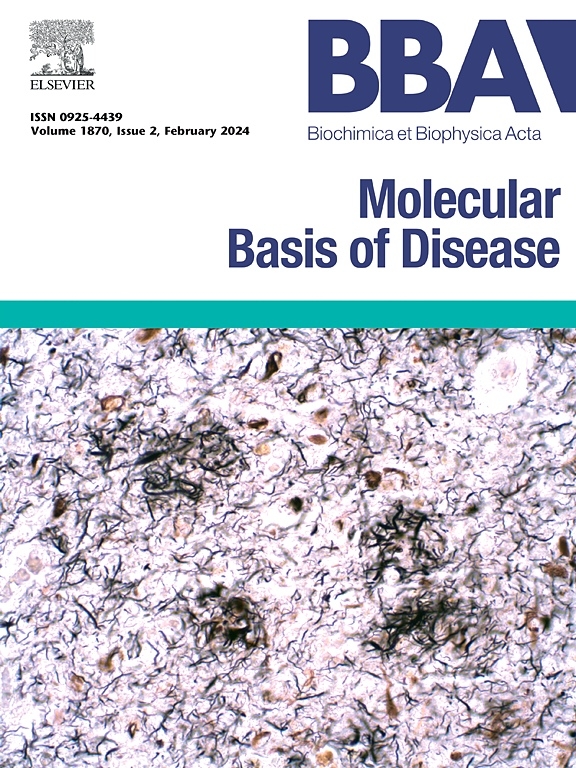衰老相互作用:从细胞失调到年龄相关疾病的治疗前沿
IF 4.2
2区 生物学
Q2 BIOCHEMISTRY & MOLECULAR BIOLOGY
Biochimica et biophysica acta. Molecular basis of disease
Pub Date : 2025-09-26
DOI:10.1016/j.bbadis.2025.168060
引用次数: 0
摘要
生物衰老是一个复杂的、多方面的过程,其特征是细胞稳态的逐渐破坏,由炎症、免疫衰老、线粒体功能障碍和基因组不稳定等交叉途径驱动。这篇综述概述了目前关于衰老相关疾病的相互关联机制的知识,包括动脉粥样硬化、肥胖、肌肉减少症、神经退行性疾病、类风湿性关节炎和癌症。我们进一步讨论了微生物群失调、性别差异和外泌体介导的通讯等因素在调节疾病进展中的关键作用。多组学技术和人工智能驱动的生物标志物,特别是表观遗传时钟的进步,因其精确量化生物衰老和分层疾病风险的能力而受到重视。最后,我们探讨了治疗潜力和有希望的临床试验,针对这些共享机制的抗衰老药物,线粒体增强剂和免疫调节剂,提供了从疾病特异性治疗到旨在延长健康寿命的整体干预的范式转变。本文章由计算机程序翻译,如有差异,请以英文原文为准。

The aging interactome: From cellular dysregulation to therapeutic frontiers in age-related diseases
Biological aging is a complex, multifaceted process characterized by the progressive erosion of cellular homeostasis, driven by intersecting pathways of inflammaging, immune senescence, mitochondrial dysfunction, and genomic instability. This review delineates current knowledge on the interconnected mechanisms underlying aging-related diseases, including atherosclerosis, obesity, sarcopenia, neurodegenerative disorders, rheumatoid arthritis, and cancer. We further discuss the critical role of contributing factors such as microbiome dysbiosis, sex differences, and exosome-mediated communication in modulating disease progression. Advancements in multi-omics technologies and AI-driven biomarkers, particularly epigenetic clocks, are highlighted for their ability to precisely quantify biological aging and stratify disease risk. Finally, we explore the therapeutic potential and promising clinical trials of targeting these shared mechanisms with senolytics, mitochondrial enhancers, and immunomodulators, offering a paradigm shift from disease-specific treatment to holistic interventions designed to extend healthspan.
求助全文
通过发布文献求助,成功后即可免费获取论文全文。
去求助
来源期刊
CiteScore
12.30
自引率
0.00%
发文量
218
审稿时长
32 days
期刊介绍:
BBA Molecular Basis of Disease addresses the biochemistry and molecular genetics of disease processes and models of human disease. This journal covers aspects of aging, cancer, metabolic-, neurological-, and immunological-based disease. Manuscripts focused on using animal models to elucidate biochemical and mechanistic insight in each of these conditions, are particularly encouraged. Manuscripts should emphasize the underlying mechanisms of disease pathways and provide novel contributions to the understanding and/or treatment of these disorders. Highly descriptive and method development submissions may be declined without full review. The submission of uninvited reviews to BBA - Molecular Basis of Disease is strongly discouraged, and any such uninvited review should be accompanied by a coverletter outlining the compelling reasons why the review should be considered.

 求助内容:
求助内容: 应助结果提醒方式:
应助结果提醒方式:


